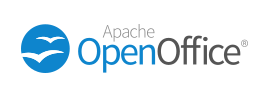The OpenOffice official debut at ApacheCon was definitely successful, with the big Apache community providing a warm welcome to the Apache OpenOffice folks. All presentations are being recorded (audio and slides) and they will gradually be made available on the ApacheCon site, but we are picking a few topics from Day 1 of the OpenOffice track for those who couldn't attend the conference.
For full coverage, see the reports from Day 2 and Day 3.
Status and future of Apache OpenOffice and its ecosystem¶
What's coming in Apache OpenOffice 4.0? And when? And, in general, what does the future of the product and the project look like? What happened during the latest 16 months and what is the current status? You can get the answers from Andrea's presentation below, "OpenOffice at Apache"; it is divided into two parts, the first one taken from a "personal" perspective, the second one from a "broader" one.
Two presentations described in detail specific significant technical improvements coming to OpenOffice in 2013:
- Andre Fischer presented the ongoing accessibility work, that will already be integrated in OpenOffice 4.0. Enhanced support for IAccessible2 will make Apache OpenOffice a world-class application as far as accessibility is concerned. It will also include support for the main screen readers on Windows: JAWS and ZoomText and will simplify government adoption of Apache OpenOffice by complying with Section 508 and similar regulations.
- Armin LeGrand presented his impressive work (ongoing for 2.5 years, with an estimated 6 months remaining) on migrating the OpenOffice DrawingLayer, one of the central components in Apache OpenOffice, used for the internal rendering of graphic objects in all the applications, to a more modern code. The huge development can be followed in branch aw080 and it already differs in more than 340,000 lines of code from the current code. Improvements will have positive effects on stability, speed, precision and enable more fancy features in the future.
The presentations about Apache OpenOffice were complemented by a review of the status and possible future ideas for two fundamental components of the Apache OpenOffice ecosystem: the Extensions and Templates websites. The presentation, by Roberto Galoppini (who could not attend due to food poisoning, unfortunately, and was replaced by Andrea Pescetti) can be found on Roberto's blog. As you can read there, Roberto looks forward to feedback and suggestions from the community.
ODF sessions¶
Besides Apache OpenOffice as a product and as a project, another important topic in the Apache OpenOffice track is the ODF format. An interesting panel discussion about the current status of ODF and future improvements was moderated by Svante Schubert and Oliver-Rainer Wittman. Among the new features coming in future ODF versions, we discussed in detail the new change tracking, with an introduction by Oliver-Rainer Wittman, an analysis of options and challenges by Svante Schubert and a demo of an extension for an improved change-tracking by Peter Rakyta from MultiRacio Ltd.
Community and fun¶
The ApacheCon offered opportunities for some social activities too. Old project volunteers could meet the recent community members in person for the first time. Community activities ranged from a constructive session about building and maturing the community (moderated by imacat and Andrew Rist, with outcomes to appear on the dev mailing list soon) to moments of crazy geeky fun with imacat's presentations (made with... Calc!) on how to render music videos in Calc!
 |
 |
| A presentation made with Calc! |
Gangnam Style, as stop-motion in Apache OpenOffice Calc |

